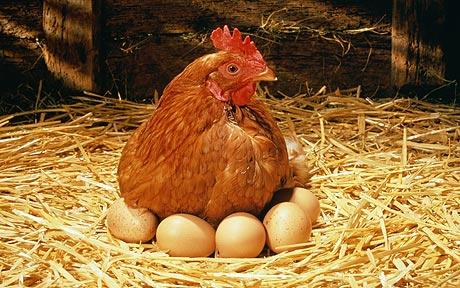Are supplements really Good for Laying hens?
Scratch Grains
Chickens are compelled to scratch at the ground. They use their toes to mix up litter or scrape the ground in search of various seeds, greens, grit, or insects to eat. Spreading scratch grains (cracked, rolled, or whole grains such as corn, barley, oats, or wheat) encourages this behavior. Scratch grains are relatively low in protein and high in energy or fiber, depending on which grain is used. When scratch grains are fed with complete feeds, they dilute the nutrition levels in the carefully formulated diets. Scratch grains are like french fries—chickens that eat too many scratch grains have less of an appetite for more nutritious feed. If you are using scratch grains, feed them to chickens in the afternoon after birds have eaten complete feed, and then provide only as much scratch grains as chickens can finish in 15 to 20 minutes.
When feeding scratch grains to chickens, it is also important to provide grit to help the chickens grind and digest the grains properly (since chickens do not have teeth). If chickens have access to the ground, they can typically find enough grit in the form for small rocks or pebbles, but it is helpful to supply commercial grit, which is available in chick or hen size. Fine gravel is an acceptable substitute for commercial grit. Oyster shell should not be used as grit since it is too soft and does not aid in grinding. In addition, growing chickens have a lower calcium requirement, and too much calcium can adversely affect their kidneys.
Grit should also be provided to pasture-raised chickens. Grit is important for breaking down the grass chickens consume. Refer to the article on the avian digestive tract for more information.
Table Scraps
Chickens are often fed table scraps (peelings, stale bread, and leafy vegetables) as treats, but excessive table scraps and greens can adversely affect egg production. The total supplementation of table scraps and scratch grains should be no more than chickens can finish in 20 minutes. Make sure that the scraps are not allowed to rot, or botulism might result. It is also recommended that scraps with strong taste, such as onions, not be fed to laying hens because eggs might take on those flavors. Sour milk can also be fed to chickens.
Clippings
The amount of complete feed consumed can be reduced by supplementing with pasture or lawn clippings. Young, tender plants are a valuable source of nutrients for chickens, but chickens are not able to digest old, fibrous plants. Do not feed grass clippings from lawns if pesticides have been recently applied.
Medicated Feeds
Medicated poultry feeds, which typically contain a coccidiostat and/or an antibiotic, are available. Coccidiosis can be hard to control through sanitation practices alone. Chickens benefit from being fed a coccidiostat at low levels. Mature chickens develop a resistance to coccidiosis if allowed to contract a mild infection of the disease. Chickens raised for replacement can be fed a coccidiostat-containing feed for the first 16 weeks of life. The medicated feed should then be switched to a nonmedicated feed.
Medicated feeds are not typically fed to laying hens. Examples of coccidiostats added to poultry diets include monensin, lasalocid, amprolium, and salinomycin. Examples of antibiotics added to feed include bacitracin, chlortetracycline, and oxytetracycline. Be sure to check the feed label for any warnings concerning the medication used in the feeds. Monensin, for example, can be toxic to horses.
Feeding and Storage
The way the chickens are fed is as important as the feed itself. Supply enough feeder space for all the chickens to eat at one time. With limited feeder space, some chickens do not get enough to eat. Place the feeders so that the trough is at the level of the chickens’ backs. This will reduce feed spillage. If bantams and large fowl are being fed from the same feeder, adjust the feeder to the height of the bantams.
Feed should not be stored for more than two months. It is also important to keep it in dry, cool place. Old feed can lose its nutritional value and is susceptible to mold.



Hi there,I log on to your blogs named “Layers supplements – Menengai Afya Feeds & Millers” on a regular basis.Your story-telling style is awesome, keep doing what you’re doing! And you can look our website about how to plan my wedding.